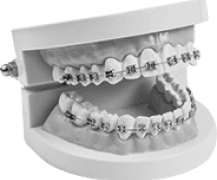MakeO blog
Flossing is an important part of every oral care routine. It is non-negotiable if you want healthier, cleaner, brighter teeth and fresh breath. But, with so many different techniques of flossing, how do you know which one is the best? How many types of flossing techniques are recommended and approved by the dentist? What is a smart flosser and how effective is it?
In this blog, the experts at makeO have answered all these questions and more.
makeO is the country’s fastest-growing and most trusted oral care brand. We are introducing the innovative and fastest-growing technology to transform your oral care routine that is backed by a team of professionals.
What is Mouth Flossing?
Mouth flossing, also known as dental flossing, is a technique used to clean the spaces between teeth and along the gumline, traditionally, using a thin, flexible thread or ribbon. Flossing helps to remove food particles and plaque stuck between the teeth which can lead to tooth decay and gum disease. There are different types of dental floss, including traditional floss, dental picks, interdental brushes, and smart water flossers. Let us take a deep dive into the subject and understand more about these different types of flossing techniques.
Different Types of Mouth-Flossing Techniques
There are many different types of mouth-flossing techniques. They all have their own pros and cons. Some of the most common techniques are listed below along with their pros and cons.
1. The spool method
This is the most common method of flossing. To use this method, cut a piece of floss about 18 inches long and wrap it around your middle fingers, leaving about an inch of floss between your thumbs. Gently guide the floss between your teeth, using your thumbs as a guide. Curve the floss into a C-shape and gently move it up and down, scraping the sides of your teeth. Make sure to floss below the gum line as well.
Pros: It is inexpensive, effective and easy to adapt to.
Cons: Can be difficult to get floss with braces, other dental appliances and below the gum line.
2. The loop method
This method is similar to the spool method, but instead of wrapping the floss around your middle fingers, you create a loop with the floss and hold it between your thumbs and forefingers.
Pros: Easy and convenient for people with braces.
Cons: Can be slightly more difficult to learn than the Spool Method.
3. The Smart Water Flosser method
Water flossers are a newer type of flossing device that uses a stream of water to clean between your teeth. Water flossers can be a good option for people who have difficulty flossing with traditional flosses, such as people with braces or sensitive gums.
Pros: It is more effective at removing plaque than traditional floss. Can be comfortably used with braces or other dental appliances. They are the best for people with sensitive gums.
Cons: It can be slightly more expensive than traditional braces.
Conclusion
The best way to find out which is the best flossing technique for your teeth is to experiment with different methods and see which is the most convenient and effective for you. You can try out the smart water flosser from makeO that is not only trusted by many across the country but also backed by professionals. It comes with 4 different modes including Soft, Strong, Pulse and Point Motion to meet your everyday needs. It has a compact design and rechargeable battery making it perfect for everyday use. For more oral care products, browse makeO toothsi website today!
FAQs
What are the common flossing mistakes?
The most common mistake that people make while flossing is that they let the floss smack against the gums. This can cause gum irritation, bleeding gums and even gum recession.
How long does flossing take to show results?
Flossing for a period of three to ten days can allow your body to adjust to the stimulation and promote the strengthening of gum tissue. Typically, after about a week of regular flossing, the bleeding of the gums should subside.
How do you know if flossing is working for you?
If flossing is working for you, you will experience fresher breath and the bleeding of your gums will stop. However, it may take several days to a week of regular flossing to notice a reduction in gum bleeding.
Can flossing whiten your teeth?
Flossing prevents plaque buildup in your teeth. Plaque can contribute to decaying or yellowing of the teeth.
How many times a day should you floss your teeth?
Experts recommend flossing the teeth at least once a day.
related categories
Related articles

Types of Braces: Removable vs Fixed Braces, Which is Right For You?

This Diwali, Smile Bright With makeO Teeth Whitening Kit

Dr. Pravin Shetty: Pioneer in Lingual Orthodontics & Innovative Smile Solutions
How do I Know I’m the Right Candidate for makeO toothsi Teeth Aligners?

